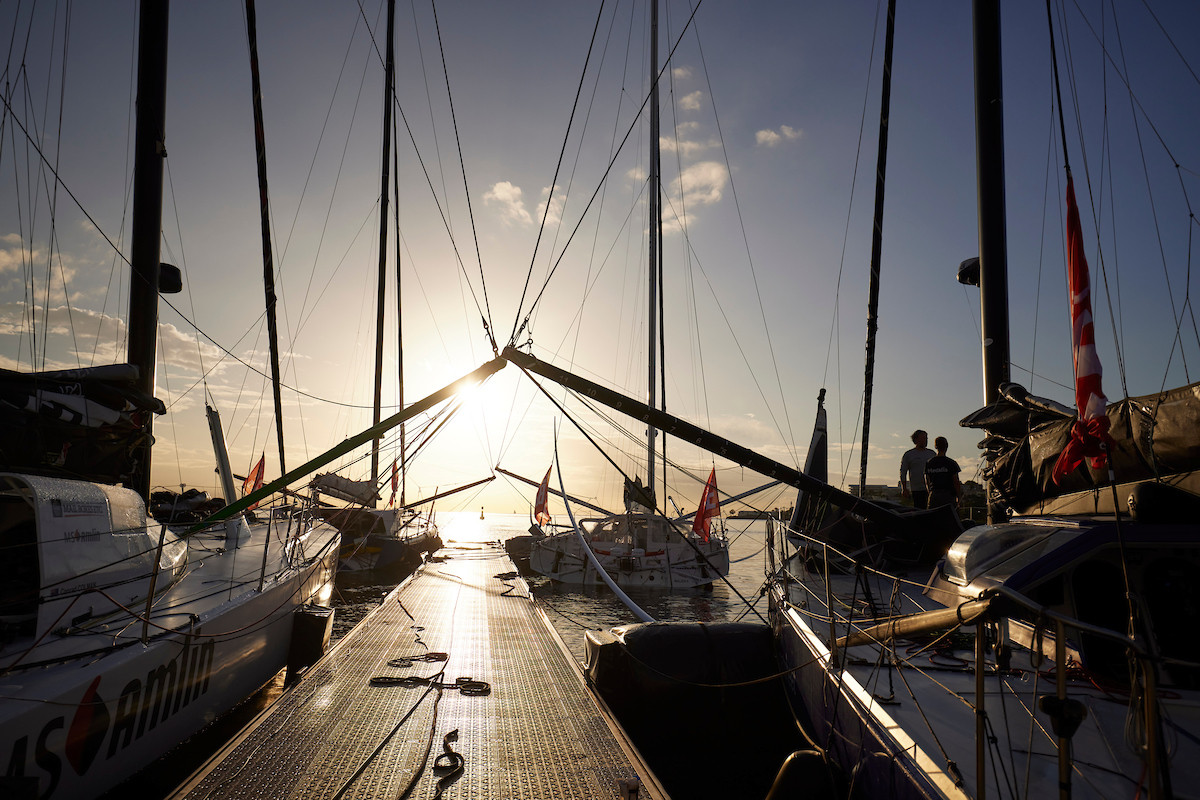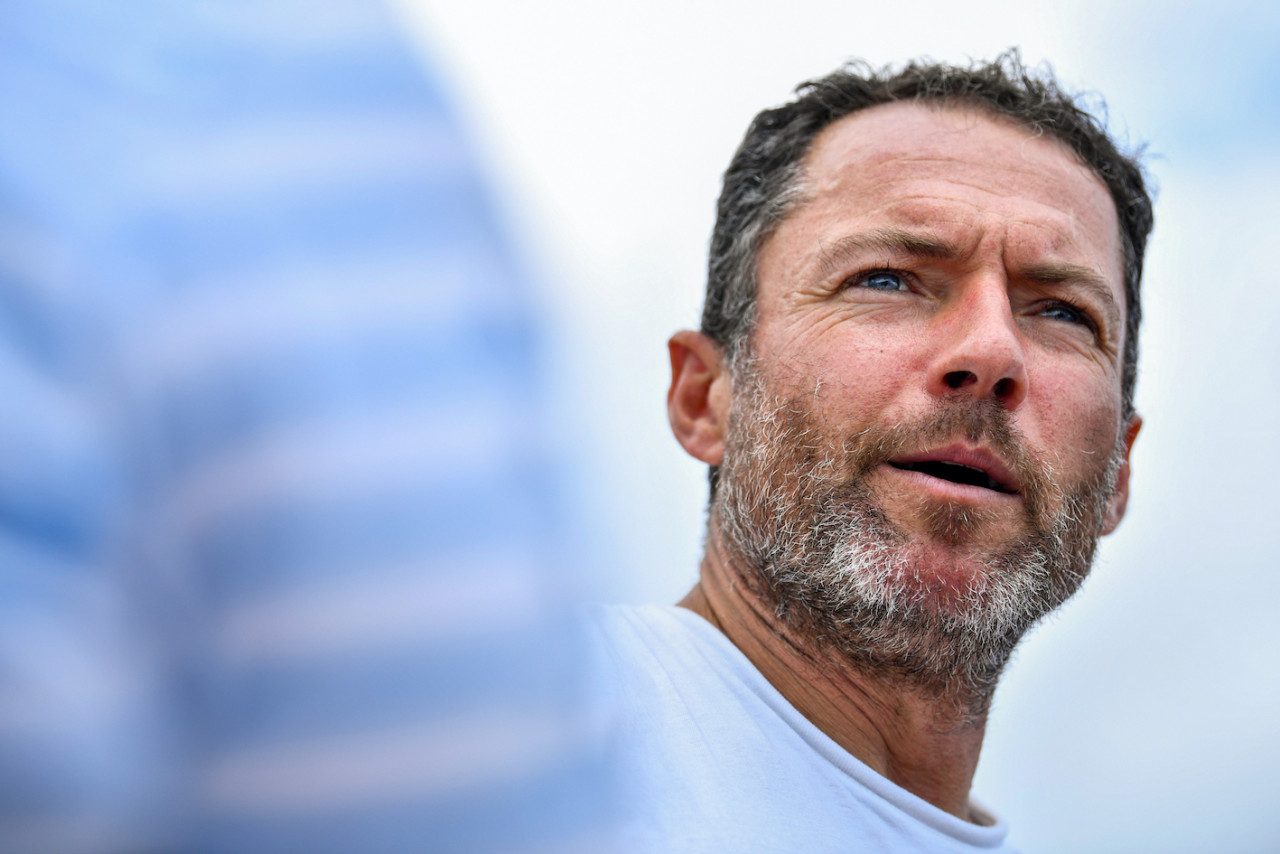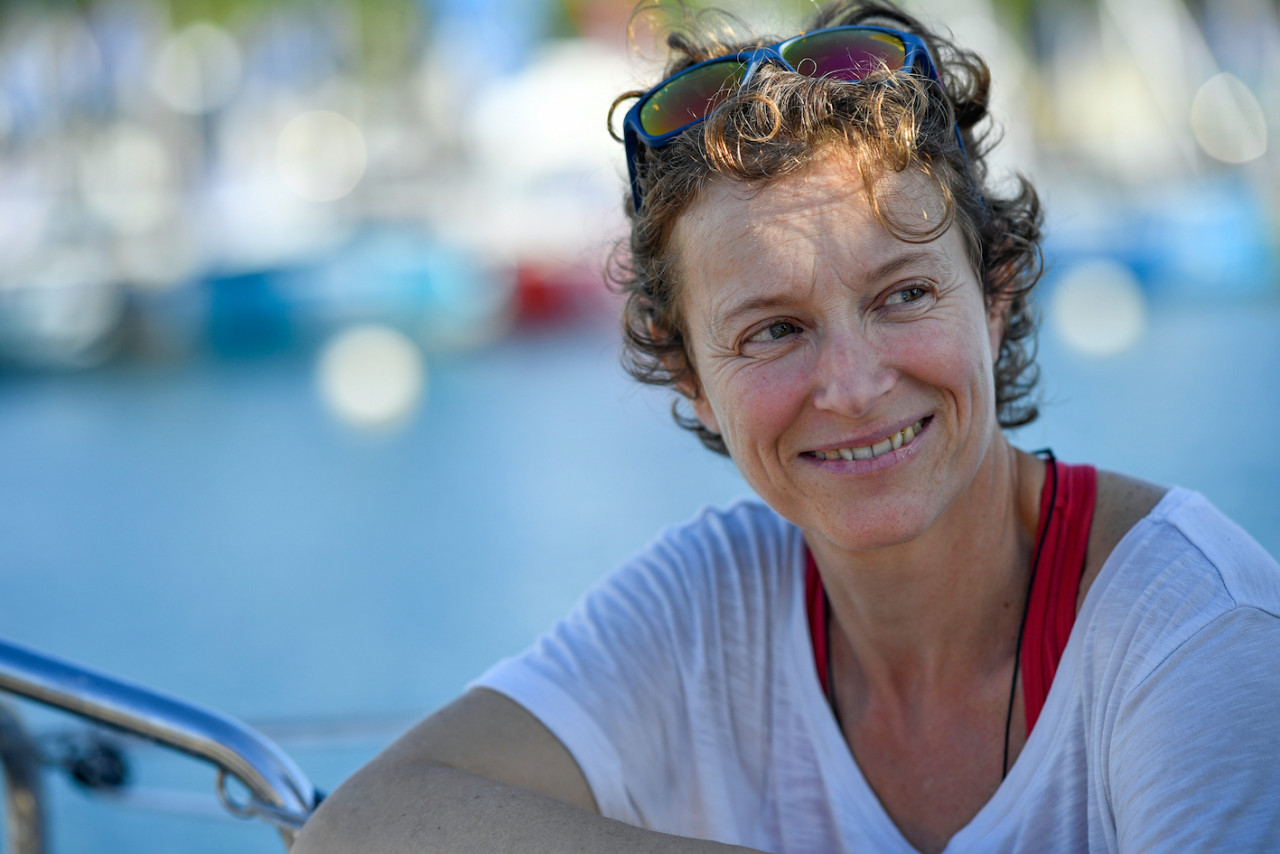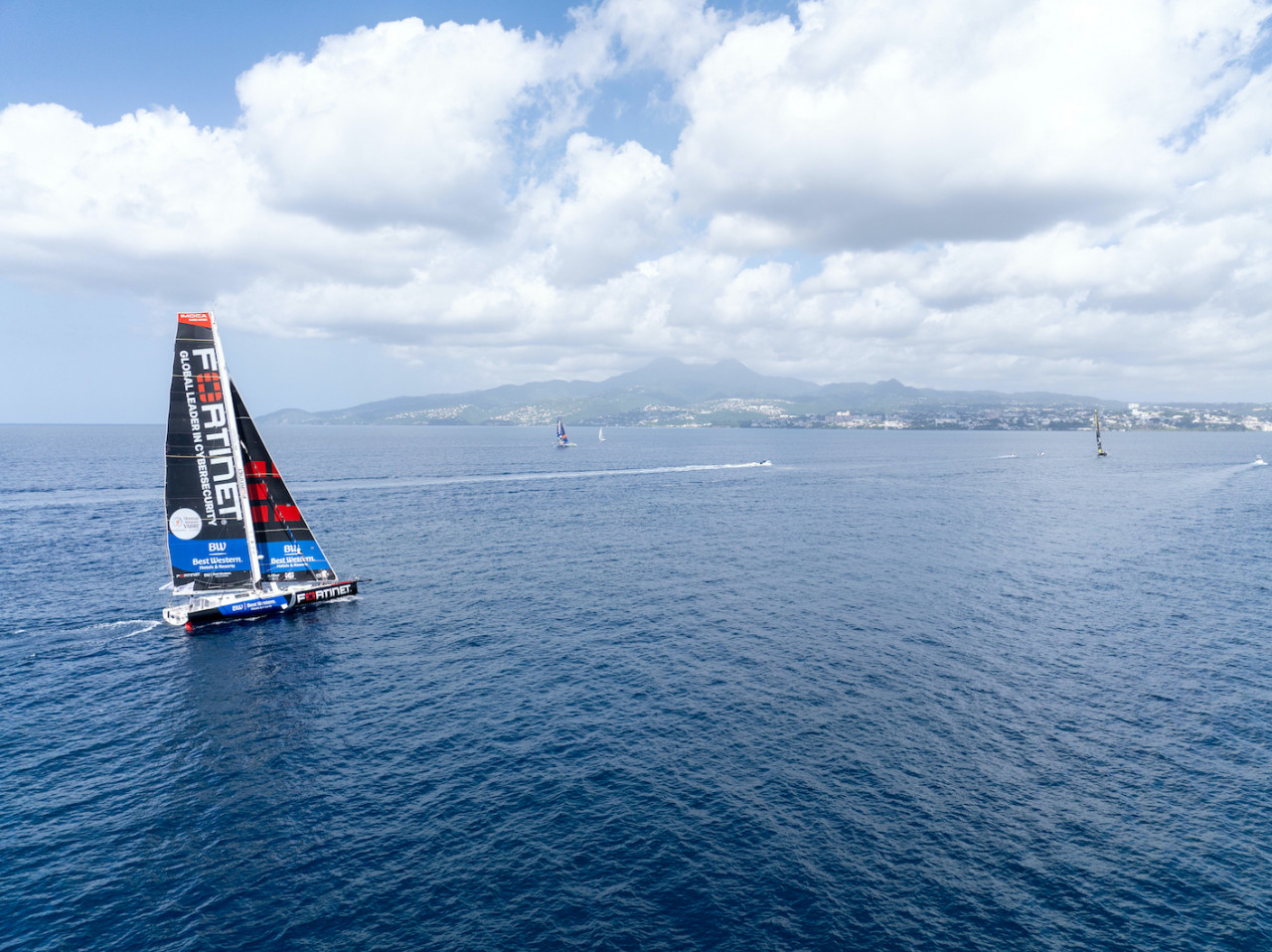Solo racing returns in the IMOCA Class with the Retour à la Base

So here we go, the beginning of the final build-up to next year’s Vendée Globe as single-handed racing returns to the IMOCA Class, with the first ever solo Retour à la Base from Martinique in the French Caribbean to Lorient.
On the startline in the sunshine on Thursday will be over 32 boats and their skippers, taking on the north Atlantic in the depths of winter for the first time in a race of this kind.
Ahead of them is the daunting challenge of sailing out of the heat of the Tropics and into the cold and often dangerously unstable December weather off northern Europe in a race that, for many, is a key component in their qualification for the Vendée Globe.
This is the Transat Jacques Vabre in reverse and the mood on the dockside at Fort-de-France is one of understandable nervous anticipation for what looks like a fast but testing west-east transatlantic.
 © © Jean-Louis Carli / Alea
© © Jean-Louis Carli / Alea
Romain Attanasio is something of a veteran in the IMOCA Class these days as he continues his preparations for what will be his third Vendée Globe. The Fortinet-Best Western skipper, who finished in 17th place in the Transat Jacques Vabre, summed up the challenge of this 3,500-nautical mile course.
“To be honest, it’s not really easy. When I meet other skippers, everybody says ‘yeah, yeah, my God, why are we doing this?"Attanasio, 46, told the Class. “It will be difficult because everybody is tired and it’s not an easy road ahead."
“We know the north Atlantic is hard in winter, and there has been just one week for recovery, which is not enough for us. But yeah, we are happy to go back to France in this race but we know it will be hard for sure,”he added.
Attanasio then made a great observation about IMOCA racing. Before almost every long race, we have grown accustomed to hearing skippers talk about trying to preserve their boats and not getting carried away by being too competitive at the expense of themselves or their boats. But then they get out on the racecourse with their rivals all around them, and with hundreds of thousands of people following them on the tracker, and something quite different happens.
“Everybody is saying they will sail slowly – better safe than sorry – but, you know,” he explained laughing, “we are stupid; when you give us a startline and a finish line, it’s difficult to stay sailing slow and just delivering the boats. That’s why it will be difficult to find a good balance between the two modes.”
 © © Jean-Louis Carli / Alea
© © Jean-Louis Carli / Alea
For the Franco-German skipper Isabelle Joschke, another veteran of the IMOCA Class, now in her seventh year racing 60-foot monohulls, the urge to compete is strong after a frustrating Transat Jacques Vabre. In the early stages she had to divert to Lorient for mainsail repairs and then eventually finished, alongside Pierre Brasseur, in 29th place.
“This race is a qualifier, so in a way it’s compulsory,”said the MACSF skipper, the first woman to win a leg of the Solitaire du Figaro. “Before I set sail from Le Havre, I said to myself that I was going to do the Retour à la Base, but without any pressure. And today it’s a bit different because, from a sporting point of view, the Transat Jacques Vabre didn’t happen for me. So I’m in the middle ground between taking it easy, because it’s not my absolute sporting objective, but I also want to be in the game so as not to be at the back of the pack.”
Joschke is finding this an interesting challenge; a new race, at a new time of year and making the switch from double-handed to solo. And she has come up with a useful psychological trick to keep herself in the zone during her five-day stopover at Fort-de-France.
“I know there’s an inertia and often after a race I still have a bit of energy and then I crash,”she said. “And I had a feeling that that wasn’t going to fit in with the timing here. So I prefer to stay inside and tell myself that I’m still racing – like a Figaro sailor, where you’ve really learnt to be in rest mode but still be involved in the race. I’ve always seen the Transat Jacques Vabre,” she added “and the Retour à la Base as a two-stage race, not as two different races.”
Once again we can expect to see thrilling competition at the front of the fleet between the likes of Thomas Ruyant, bidding for his fourth transatlantic victory in succession, Yoann Richomme, who will be keen to match Ruyant’s pace in an identical boat, and Jérémie Beyou who will want to put a disappointing Transat Jacques Vabre behind him. Mid-fleet, meanwhile, there are plenty of skippers with points to prove, while the leading daggerboard sailors will be battling it out for glory, among them Benjamin Ferré, Louis Duc and Guirec Soudée.
 © © Fred Olivier / Alea
© © Fred Olivier / Alea
Attanasio, whose shore team has been working hard in hot conditions at Fort-de-France to repair lots of breakages from the Transat Jacques Vabre, says the routing suggests a fast race of under 10 days. “We go 1,000 miles to the north, reaching in the tradewinds to find a big low pressure to go back to France downwind,”he summarized. “The race looks good – it’s going to be fast.”
Joschke is also looking forward to some powerful downwind surfing on the way back to the Bay of Biscay that will be both a good speed test and perfect training for the Vendée Globe. “For the moment, we’re off to a pretty good start,”she said. “We’re going to pick up some downwind conditions and cross the Atlantic downwind, which is great. If that happens, it’s great news because it’s going to make this race very interesting."
“It’s going to be good training to go and get some strong winds, downwind, in big seas, which is a bit like what we’ll be able to do afterwards in the Southern Ocean. If it comes to fruition, I’ll be able to say to myself that I did the right thing!”she added.
Ed Gorman
More info: click here
Official website: click here
Teams info
After a stunning 2025 season Sam Goodchild is the IMOCA Globe Series Champion for the second time
After a long season at the top of the IMOCA fleet that featured three race wins, Great Britain’s Sam Goodchild is for the second time in three years the IMOCA Globe Series Champion.
•••Quel rôle peut jouer la course au large dans la transformation du transport international ? Avec Pie…
Pour ce 10ᵉ épisode de Transitions, enregistré au Havre lors du départ de la Transat Café L'Or, nous recevons Jeremy Pochman, PDG de 11th Hour Racing, et Pierre-Antoine Morvan, responsable du pôle course au large et supe…
•••